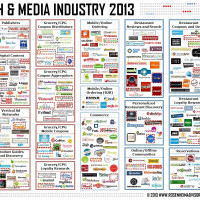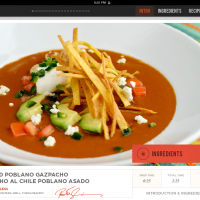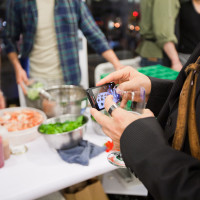Crowdsourced local food guide Real Time Farms announced Sunday a new partnership with Food52, an online community for home cooks. Real Time Farms co-founder Karl Rosaen, a former Google engineer, will join Food52 as their VP of Technology. Other members of the core team will also be joining Food52.
“We have a shared mission, which is for people to eat better- to understand not only where their food comes from but how it’s prepared,” says Food52 co-founder Amanda Hesser. “They’ve focused on farms and artisans; we’ve focused on cooking.”
Over the last two years, Real Time Farms has developed a platform designed to help consumers learn where their food comes from, in real time. Through their restaurant menu management software – their primary source of income- partnerships with retailers and brands, food warrior interns and user generated submissions, the company has crowdsourced data about 4,900 farms, 2,600 food artisans and 7, 200 farmers markets. They are also in the process of finishing an import of the National Organic Program’s nearly 22,000 farms. The data collected includes lists of products and where they can be bought, the producer’s growing practices and additional information about the farm.
Last February, Real Time Farms launched their menu management tool allowing restaurants to edit and publish “farm-linked” menus on their website. For $40 a month, restaurants could showcase their transparency by letting customers easily learn about the farm where the ingredients featured in a dish had come from. Yet, despite great enthusiasm from the nearly 100 restaurants using their menu management software, Real Time Farms found they were scaling too slowly to be able to sustain the company. The business model posed numerous challenges, many of which are common to startups in the emerging food tech sector.
“One, I think it could be argued that the tools were a little ahead of their time, and that as technology progresses, and data moves more seamlessly (and automatically) between systems, tracing ingredients will become simpler,” explains co-founder Cara Rosaen. “Two, we are also at the forefront of a wave of consumer demand for transparency, and as this grows so will the need for tools like this. Finally, it is a tool that requires a real change in behavior across the organization – updating sources and menus every time they change. This can be difficult for organizations pressed by time and limited resources. We found that while many chefs greatly supported the vision, training and implementation usually took about two months. Even with a scaled national sales team, we couldn’t grow our customer base fast enough.”
Still, the startup has successfully opened up data that was never before available to the public. And now, through their partnership with Food52, they plan to explore new avenues for making this information “relevant and helpful to people on a daily basis,” says Rosean.
Food52 has similarly been hard at work these last two years, building an active community of over 750,000 home cooks (monthly unique visitors) and publishing the first-ever crowdsourced cookbook. Earlier this year, they also launched a partnership with Whole Foods helping them develop their interactive Cooking Departments and websites, where home cooks can access Food52 recipes, participate in contests and get real-time answer to cooking questions through their Food Pickle Forum. Initially, Food52 will be featuring some of Real Time Farm’s blog posts on their website, like their round-ups of farm photographs. The details of the partnership are still being developed, but it seems likely that Food52 will be leveraging Real Time Farms’ rich database to help their community find, learn about and cook with local ingredients.
“Karl is an amazing engineer and we know our teams together will build the most progressive sourcing and cooking experience online,” says Hesser. “We have lots of ideas for how to integrate Real Time Farms’s technology into Food52 but we’ve just begun discussing them – so stay tuned!”
For now, Real Time Farms will maintain complete ownership of their company and technologies, but they will no longer be offering their restaurant management tools to new customers. Instead, they will be focusing on getting data about farms and producers by developing partnerships with groups like the USDA, National Organic Program and The American Grassfed Association, where they can get yearly data dumps. Rosaen could not comment on whether they still plan to release an API in the future.
As I have written about in the past, there is a significant opportunity for recipe publishers to develop new revenue streams by linking ingredients and products to recipes. In fact, Food52 already began experimenting with this in their Food52 Holiday Recipe & Survival Guide app, which allowed users to purchase a number of the ingredients and cooking tools from Amazon, directly from the app. Other platforms like Ziplist and Foodity are also venturing into this space, but they are developing capabilities that enable consumers to buy recipe ingredients from major grocers. Most small grocers and food producers, after all, do not have e-commerce websites or capabilities.
Food52 will likely start by enabling their users to find local ingredients. In the future, however, I predict the team could move into “local” e-commerce, either by developing their own software or through partnerships with other startups. And if they do, the face of home cooking could change dramatically. Just imagine a world where local food is more convenient and recipes make it relevant to a wider audience. Imagine the ripple effects this could have on public health, local economies and the environment.






